Common names: yellow brain, golden jelly fungus, yellow trembler, witches’ butter
Scientific name: Tremella mesenterica
Family: Tremellaceae
Fruiting season: year-round but particularly in winter
Habitat: dead wood
A frilly sign of a witch’s curse, yellow brain is a parasitic jelly fungus that looks a little like a brain and feeds on fungi that feed on dead wood.
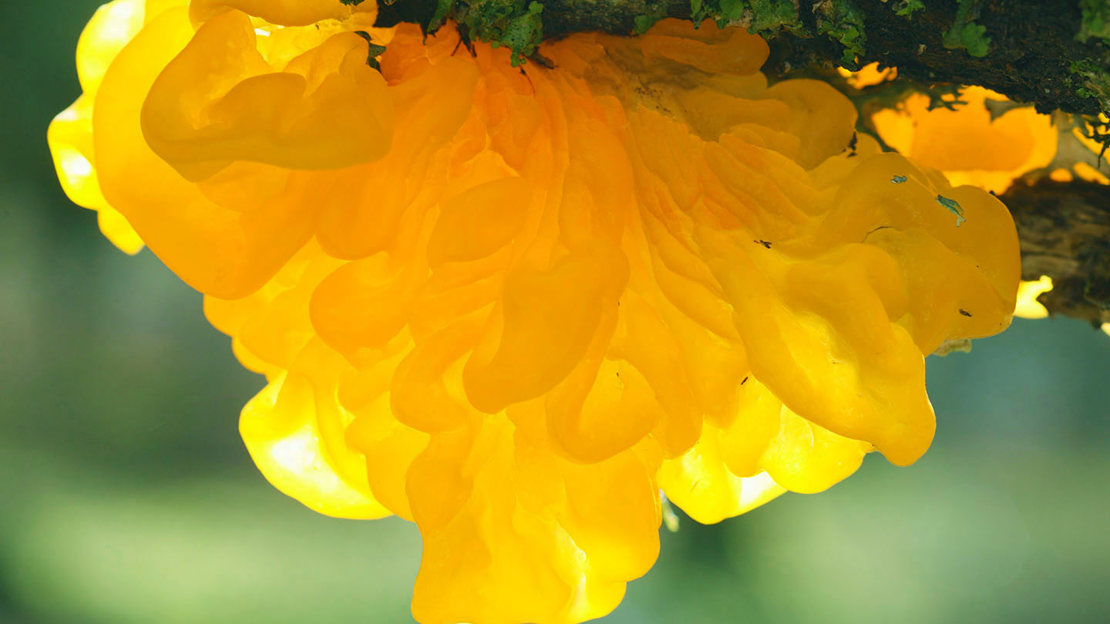
Common names: yellow brain, golden jelly fungus, yellow trembler, witches’ butter
Scientific name: Tremella mesenterica
Family: Tremellaceae
Fruiting season: year-round but particularly in winter
Habitat: dead wood
This fungus doesn’t have the typical structure of other woodland fungi. It looks like an orange gelatinous mass.
Fruit body: has an irregular shape and is smooth. The lobes are tough and greasy or slimy when wet and harden as it dries out. It ranges in colour from a pale yellow to bright orange, then rusty orange when dry.
Spores: the spores, when viewed in a mass, are white or pale yellow.
Not to be confused with: leafy brain (Tremella foliacea) which is brown and has a lobed structure. Yellow brain could also be confused with golden ear (Tremella aurantia) which occurs on dead oaks and beech. Its spores are spherical.
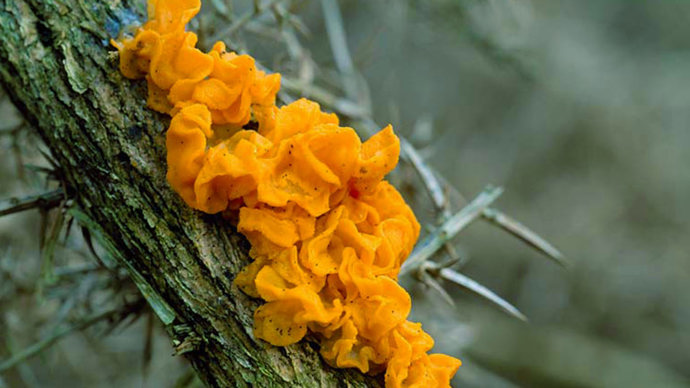
Credit: Laurie Campbell / WTML
Yellow brain fungus can be found throughout the UK and Ireland. It’s also been recorded in temperate regions in America, Asia and Australia. The best place to see it is on fallen branches of deciduous trees, gorse and other dead wood in woodland.
The name ‘mesenterica’ comes from Ancient Greek for middle intestine.
Yellow brain is a parasitic fungus that feeds on the wood-rotting fungi of the Peniophora genus. One of the most common of these in the UK is the rosy crust fungus (Peniophora incarnate) which eventually can be completely enveloped by the yellow brain fungus.
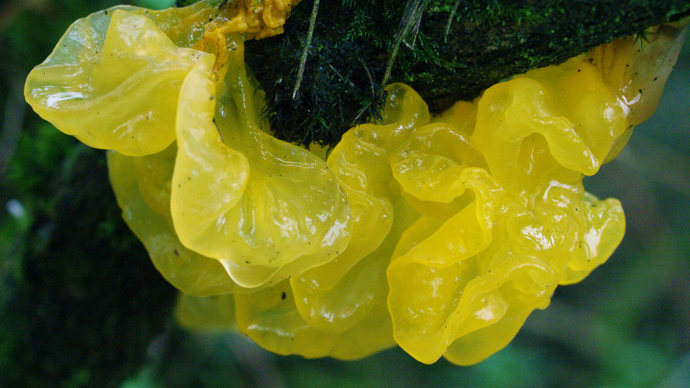
Credit: Bruce Beattie / WTML
According to European legend, if yellow brain fungus appeared on the gate or door of a house it meant that a witch had cast a spell on the family living there. The only way the spell could be removed was by piercing the fungus several times with straight pins until it went away. This is why yellow brain also has the common name of 'witches’ butter'. In Sweden, yellow brain fungus was burnt to protect against evil spirits.
It's often described as inedible because it has so little substance and is flavourless. However, in China it is used to give a signature texture to soups.
Although it's still being researched, yellow brain produces certain biological compounds that are of interest to medicine. Compounds produced by the fungus have shown anti-inflammatory and anti-allergic properties.
It is not a wood-rotter itself, but a parasite on the mycelium of crust fungi (Peniophora) that break down dead wood.
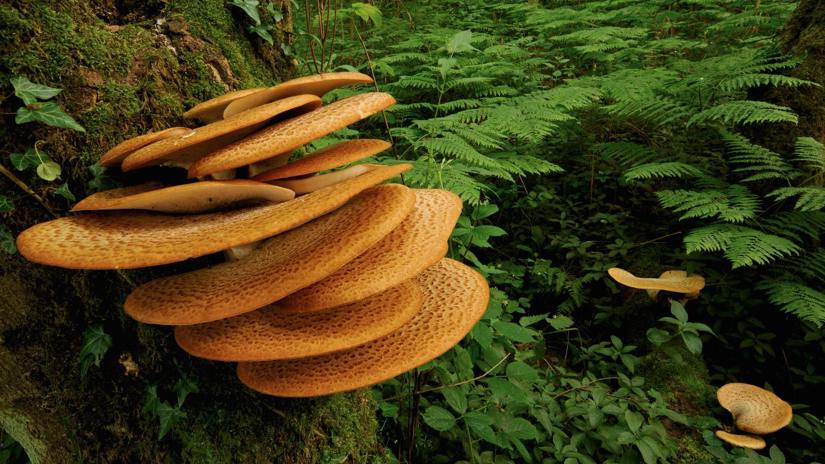
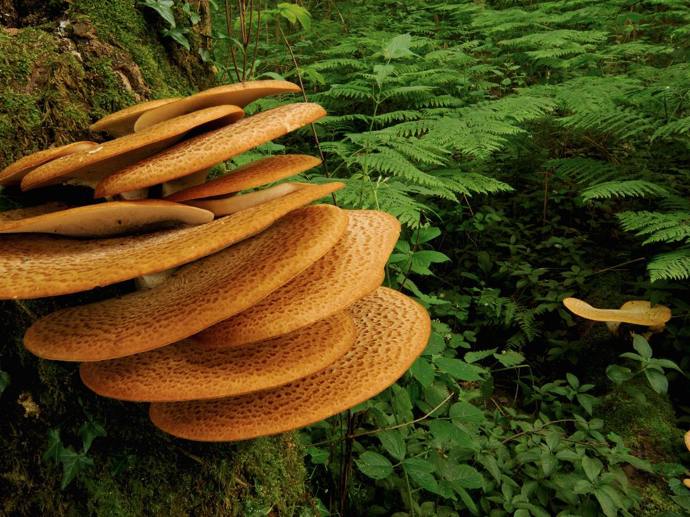
Amy Lewis • 21 Oct 2021
Bracket fungi, also known as shelf or polypore fungi, grow on both dead and living trees. Here we list some of the UK's more common and easily distinguished types to get to grips with.